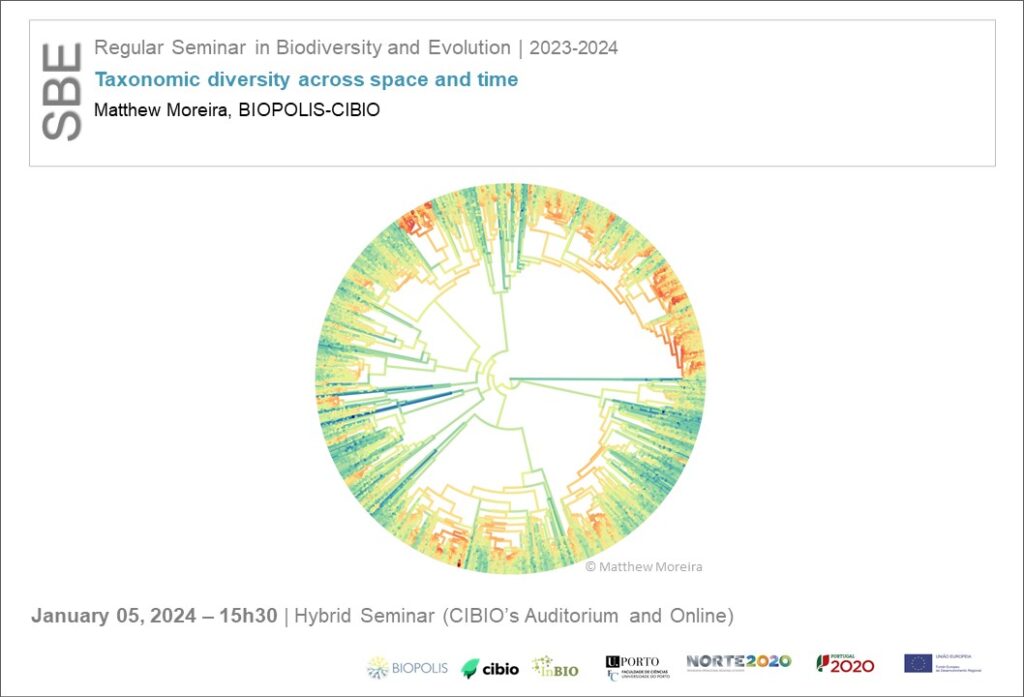Taxonomic diversity across space and time
Matthew Moreira, BIOPOLIS-CIBIO
January 05, 2024 | 15h30 | Hybrid Seminar (Zoom Link: https://fc-up-pt.zoom.us/j/84429728251)

Biodiversity is not homogeneous across space or time, resulting in distinct species richness patterns that have led many ecologists and evolutionary biologists to a central question: why certain clades/traits in the Tree of Life and/or in different regions on the planet have outstanding taxonomic diversity, while others remain species-poor? There are a set of non-mutually exclusive causes that can influence species richness patterns, generally involving time, diversification, dispersal, or transition rates among states of a character. Overall, diversification (speciation rates minus extinction rates) is a consistently important factor driving species richness patterns, leading to an additional question: what explains variation in diversification rates? Species’ traits (e.g. ecology, physiology, morphology, life-history) are an important driver of diversification. Identifying which traits are related to diversification, or even how different species’ traits evolved, can help understand the uneven distribution of species richness. Ultimately, it is crucial to pinpoint the mechanisms that foster (or imperil) the build up of taxonomic diversity.
More information here